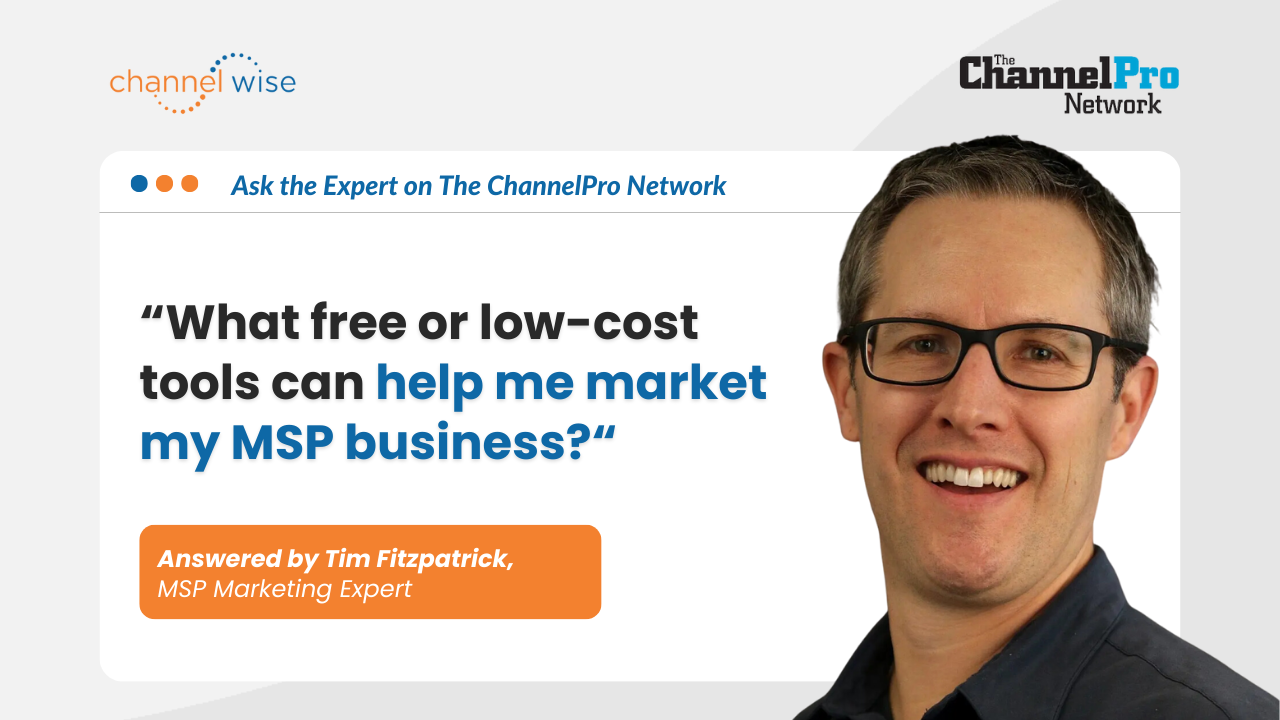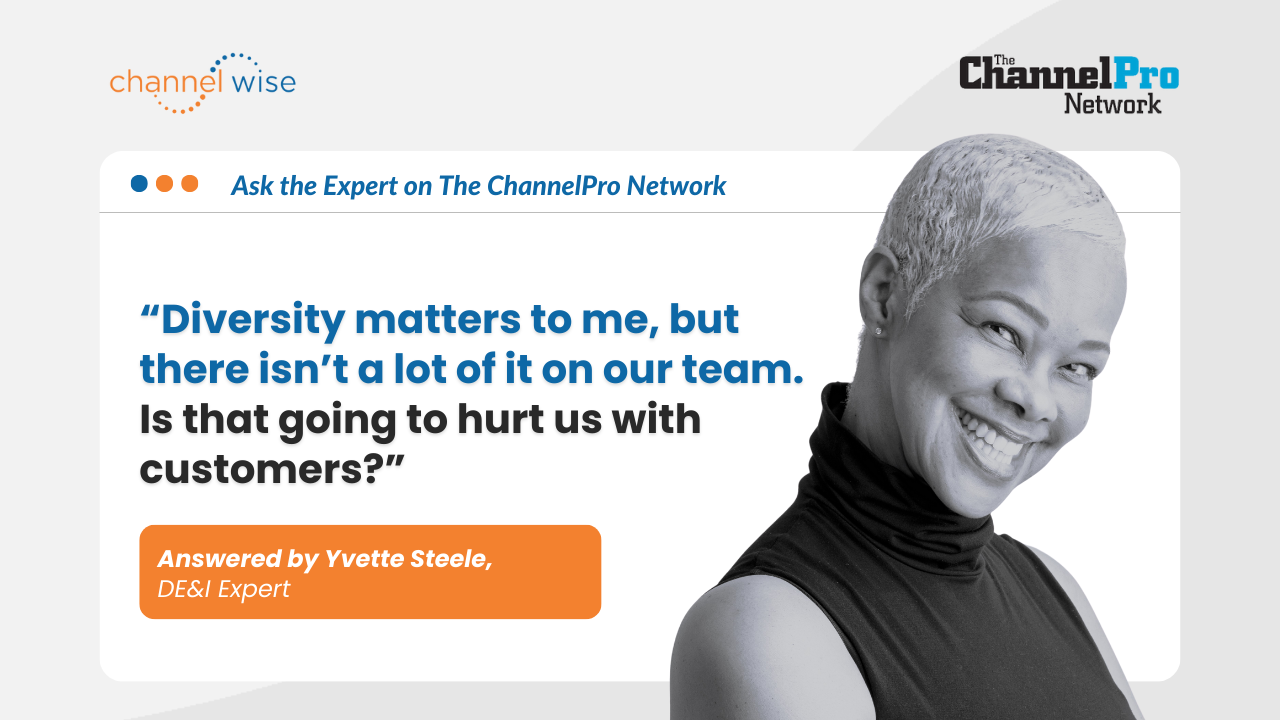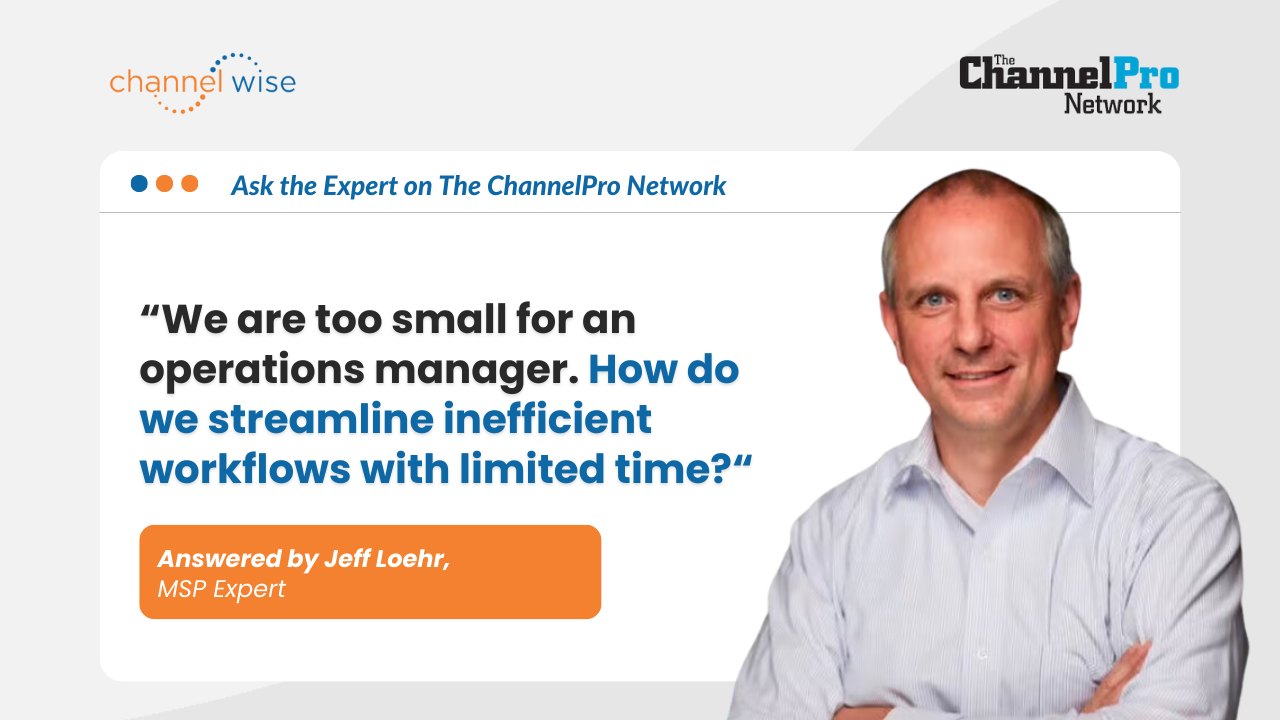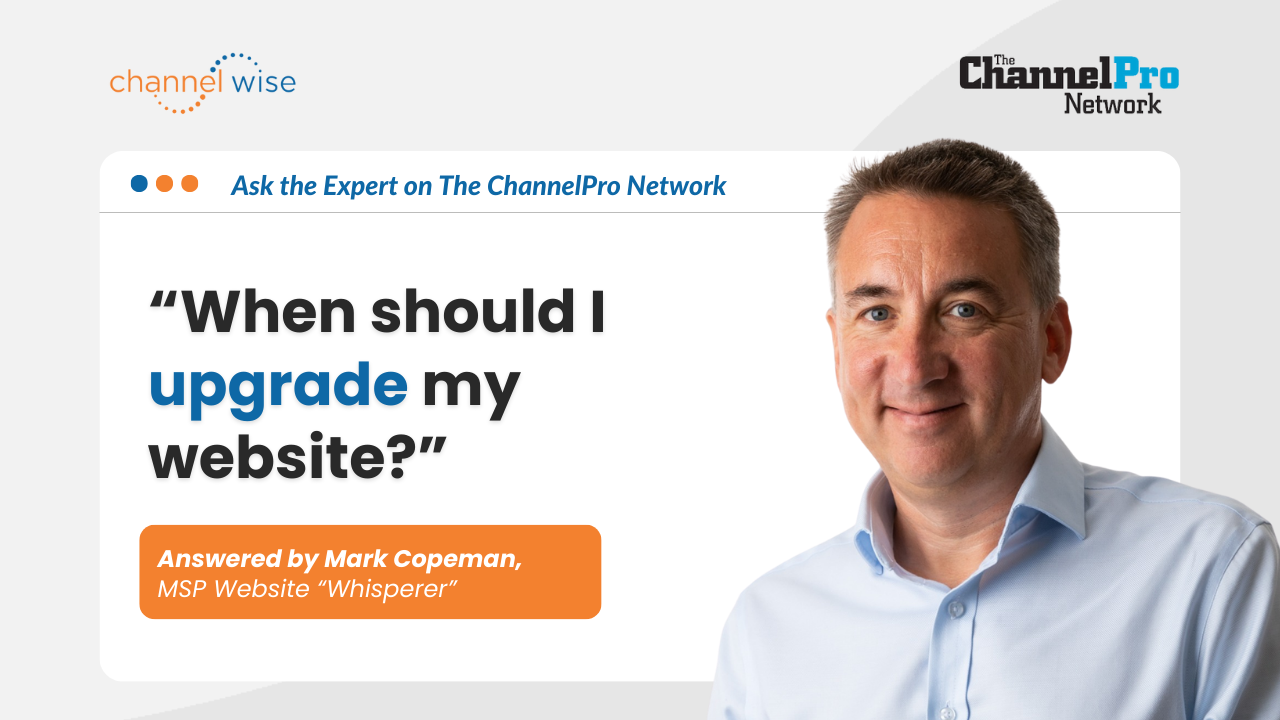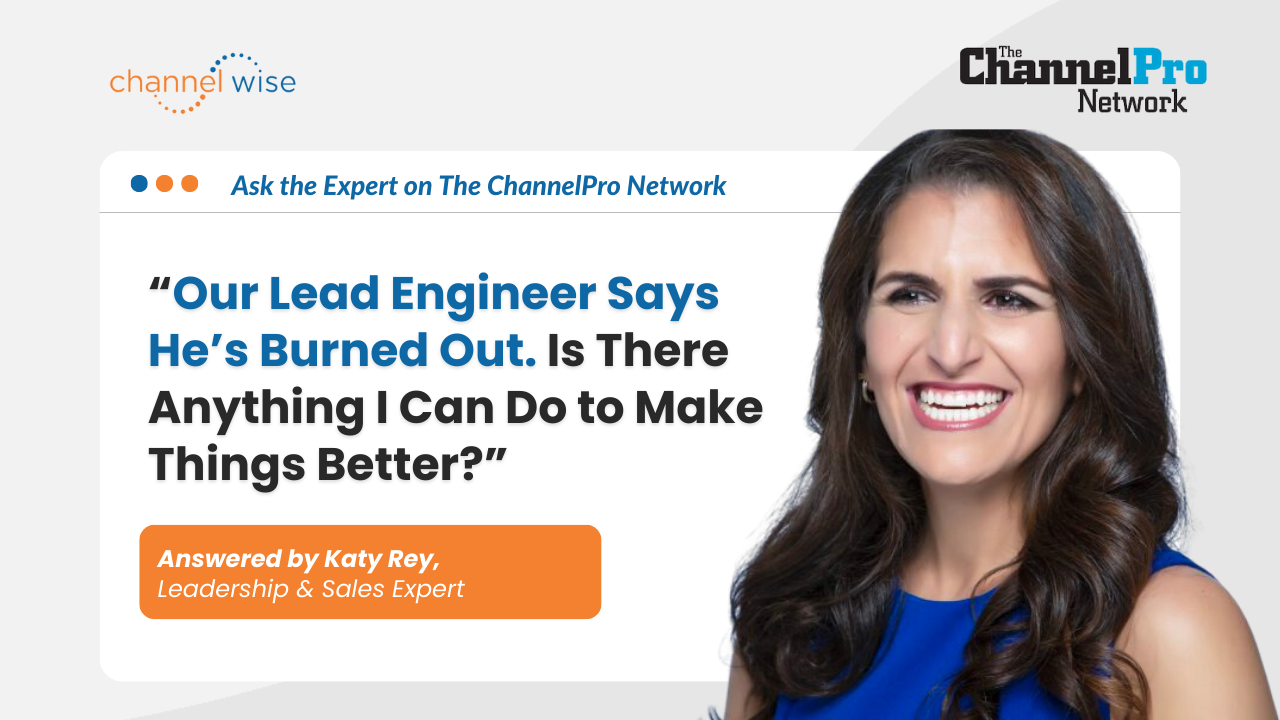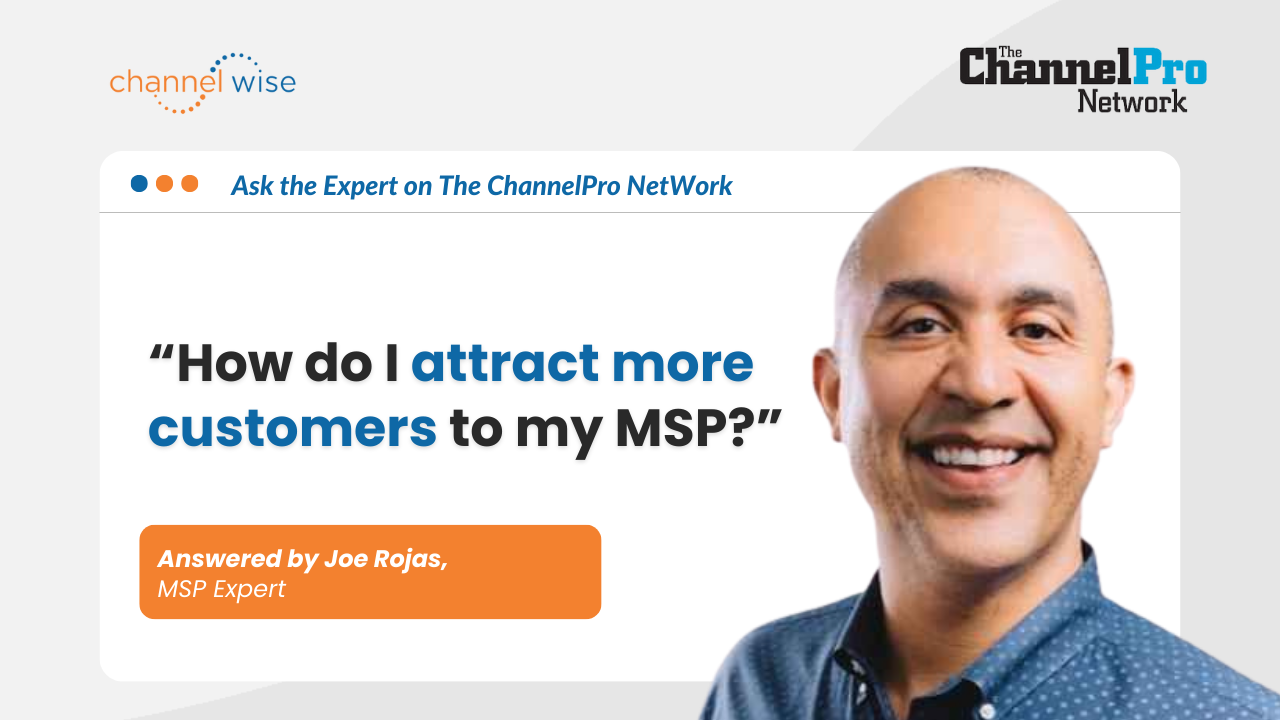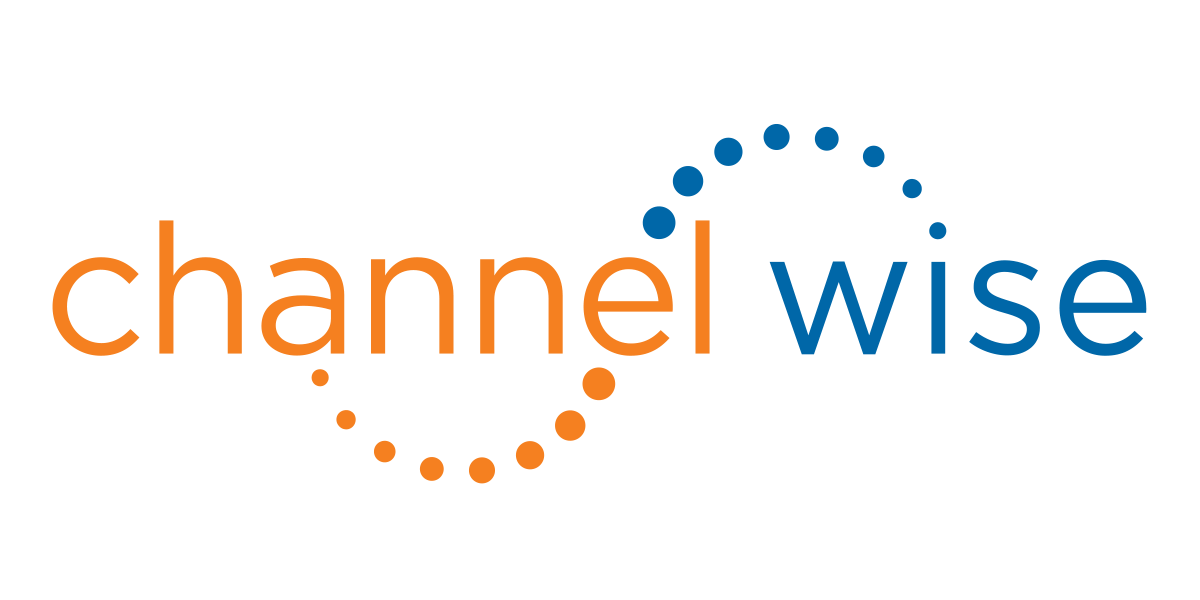How to Sell Managed Cyber Security Services with Matthew Koenig
Click here to watch the replay:

Cybersecurity is a rapidly growing market, and Managed Service Providers (MSPs) must start taking notice.
In this Ask the Expert Episode, Kathryn Rose, CEO & Founder of channelWise, interviewed cybersecurity expert Matthew Koenig, a
channelWise expert and Vice President of Channel Sales of Nodeware, to discuss the benefits of selling cybersecurity solutions, how MSPs can improve their sales operations, and the importance of regular assessments for their clients.
Highlights:
- MSPs should care about cybersecurity due to the growing market opportunity and the need for companies to adhere to regulatory frameworks.
- MSPs should focus on selling a story for their cybersecurity solutions instead of using fear as a motivator.
- Regular assessments are crucial for identifying vulnerabilities and educating clients about potential risks.
Why do many MSPs struggle in sales, and what steps can they take to improve their sales processes?
MSPs need a structured lead generation process and a value statement highlighting what they bring. They also need to be organized, define their market, and then use a lead generation platform to contact potential customers. Many MSPs are afraid to reach out to strangers, but they need to overcome this fear and focus on talking about the customer's business and asking open-ended questions to get them thinking about potential issues. Also, MSPs should avoid using fear, uncertainty, and doubt tactics in their sales pitch and instead tell stories about other companies facing similar challenges.
Why don't MSPs and small business owners prioritize cybersecurity?
Many MSPs and small business owners still underestimate the importance of cybersecurity, despite the high number of cyber breaches that impacted businesses in 2021, including those with fewer than a thousand employees. In addition, many small business owners with no cybersecurity measures believe their business is too small to be attacked. However, cyber liability insurance is becoming critical, and more businesses are requiring certain cybersecurity measures to be in place. It's important for MSPs to educate their customers about the importance of cybersecurity and to make sure they're doing the right things to protect their business. If MSPs don't get involved, someone else will, and they risk losing their business.
How can MSPs get leads and grow their business by adding cybersecurity to their practice?
MSPs can get leads and grow their business by adding cybersecurity to their practice, as cybersecurity is becoming increasingly important and required for businesses. One way to get leads is by forging relationships and collaborations with insurance brokers that sell cybersecurity insurance. By becoming a package deal with insurance brokers, MSPs can ensure that everything is as secure as possible for the customer and that the insurance company will pay out in case of an event. MSPs should also understand the requirements of each insurance company, as not understanding these requirements can result in the customer not getting paid in case of a claim.
What are your recommendations for MSPs to sell cybersecurity solutions without leaning too heavily on fear?
MSPs can sell cybersecurity solutions to clients by starting with a business conversation and understanding their specific needs. They can ask questions about how a cyber attack might impact their business and then use assessment findings to educate clients about potential risks in a non-technical way. It's important to avoid fear-based tactics and focus on presenting facts and solutions that are relevant to the client's business. MSPs should also differentiate themselves by highlighting their security process and how it aligns with the client's business needs. I also recommend using an assessment to sell, discuss facts and educate on findings rather than relying on fear-based language. The assessment can also be used to follow up with customers who have not yet made a decision by pointing out concerning issues found during the assessment and encouraging them to take action.
What advice do you have for MSPs in selling and positioning cybersecurity with their customers?
One, have a cybersecurity practice. If you don't, you're getting left behind. Two, don't sell on fear, uncertainty, and doubt. Sell on business and business outcomes. Three, ensure you're talking to your customer regularly about what you are doing to protect them. Four, always use an assessment. Always have an intelligent conversation about what is vs. what could be. And finally, don't be scared of your customers. Ensure you are pricing your offering correctly and not doing it in a way that hurts you because you think you need to give things away to take care of your customers. Also, if you have a customer you are not sure is secure in doing the right things, guess where that risk transfers to. It transfers right over to you. Do you want to carry the risk for that customer? Are they so good of a customer that you're willing to risk your business for them?
For more advice about sales, visit Matthews's profile on channelWise.
Check out channelWise.com for more experts to help you with your business or career.
Note: Transcript is edited for time and clarity.
